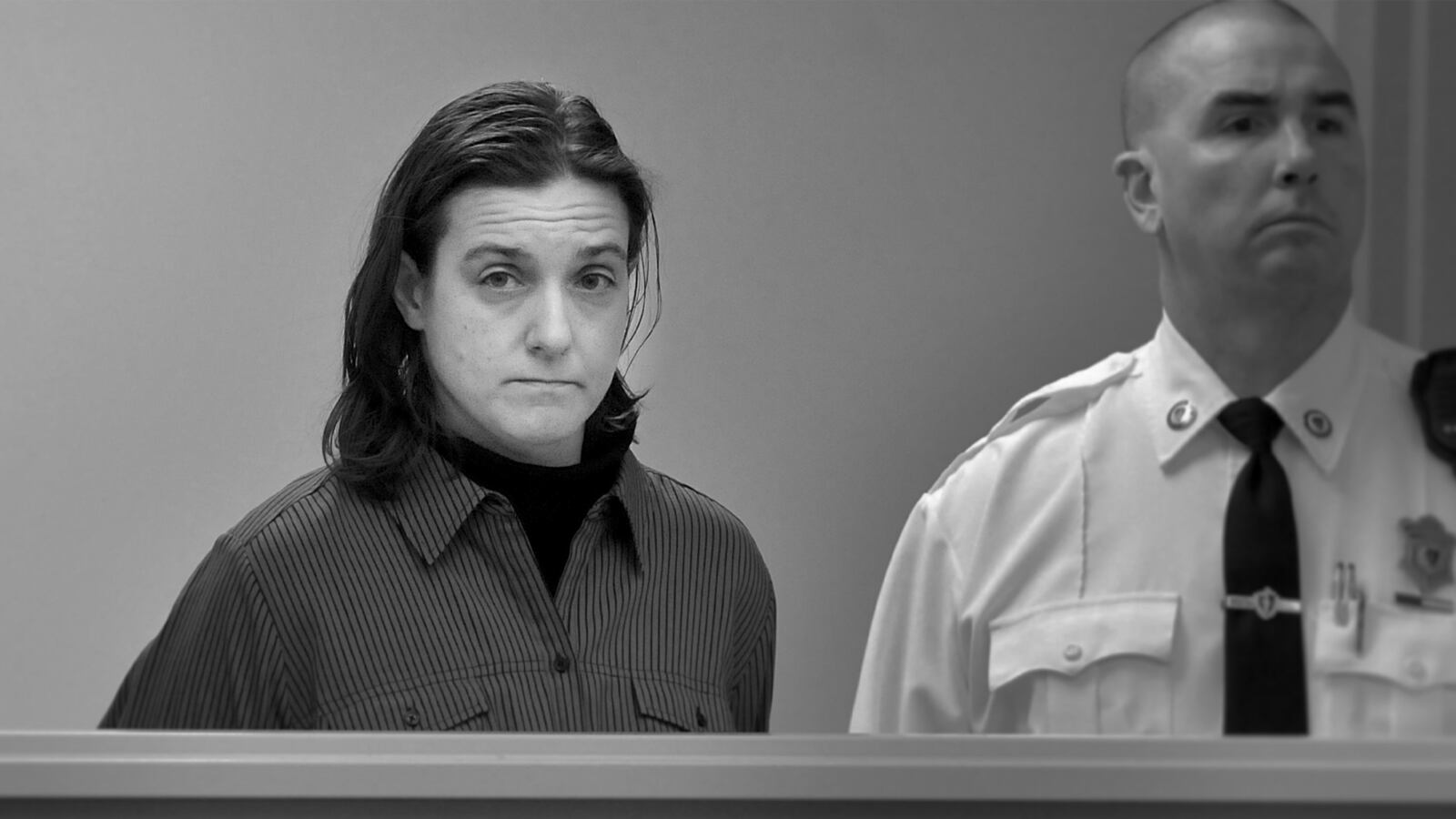In separate rulings in 2017 and 2018, Massachusetts dismissed more than 35,000 criminal convictions on the basis of misconduct perpetrated by two drug lab technicians as well as, in one of those cases, the district attorney’s office’s willful suppression of vital evidence. How to Fix a Drug Scandal treats this as a historic triumph for justice, and in terms of combating and righting systemic wrongs, it was. And yet the more one sits through Netflix’s four-part docuseries, the more one also wonders if this was a qualified victory at best.
Directed by Erin Lee Carr (I Love You, Now Die), and executive-produced by Alex Gibney, the streaming service’s latest true crime offering (premiering April 1) concerns Sonja Farak and Annie Dookhan, technicians at, respectively, the state-run Amherst lab and Boston’s Hinton State Laboratory. A star academic who’d also been the first female in Rhode Island to ever play high school football, Farak handled narcotics for most cases in Massachusetts’ western half. Plagued by depression, she soon began dipping into her office’s stash, first ingesting small doses of liquid methamphetamine, and then gravitating to cocaine and eventually crack—which she cooked, herself, in the lab. Perpetually using the drugs she had already tested, she was busted when colleagues and cops found missing samples (and paraphernalia) at her workstation.
Whereas Farak’s transgressions stemmed from her rampant addiction, Dookhan’s wrongdoing was the byproduct of unchecked ego. Renowned for being four times as efficient as her fellow chemists, Dookhan was a veritable star at her lab, and with prosecutors, with whom she was unreasonably chummy. As notable discrepancies began piling up, however, it became clear that Dookhan’s rapid turnaround time with testing assignments was due to the fact that she wasn’t actually doing them; rather, she was fudging data on the vast majority of her cases, all in order to bolster her reputation. Such lying was part of a pattern of deceit on Dookhan’s part (she also falsely claimed she’d received a night school degree from Harvard). And like Farak’s deeds, her deception called into question the thousands of convictions that had been predicated on her results, and her concurrent court testimony about them.
Because their drug-verification duties were the foundation upon which so many prosecutions rested—i.e. you can’t nail someone for possession or distribution until you validate that what they possessed or distributed was illegal—Farak and Dookhan’s untrustworthy lab work potentially invalidated tens of thousands of guilty verdicts. Naturally, this wasn’t a pleasant prospect for Massachusetts Attorney General Martha Coakley, nor for local prosecutors, who quickly cast these dueling incidents as isolated events perpetrated over the course of merely a few months. The idea was to limit the damage so drug offenders weren’t released en masse. That tack, in turn, didn’t sit well with defense attorneys Luke Ryan, Jared Olanoff, and Daniel Marx (and later, ACLU attorney Matt Segal), who fought to have their clients released from prison. When that initially failed, deeper investigations unearthed a bombshell: in Farak’s case, the government had deliberately hidden exculpatory evidence which confirmed that—contrary to the state’s claims that she’d only misbehaved for a brief period—she’d been an addict since 2009, which in turn nullified virtually every case she’d touched during her career.
That cover-up, coupled with Farak and Dookhan’s obviously negligent conduct, led to the 35,000 dismissals. So justice served, right? In a certain sense, yes. How to Fix a Drug Scandal convincingly contends that Farak and Dookhan’s actions compromised the integrity of the trials in which they were involved, thus requiring discharges or retrials. In doing so, the series lays bare a host of institutional failures, be it the lack of funding for—and oversight at—the decrepit and understaffed Amherst drug lab, or prosecutors’ unethical refusal to turn over all evidence to their defense counterparts. These two drug lab scandals were undeniably born from both personal and organizational mistakes and deception, most of it driven by various individuals’ self-interest.
Yet on the other hand, How to Fix a Drug Scandal is a tale about correcting the wrongful convictions of people who were, for the most part, likely guilty of the very crimes they were accused of committing. Even if Farak was high on the job, and Dookhan was making up many of her reports, the fact remains that the vast majority of police-seized narcotics that made it to their lab desks were legitimate drugs—a reality proven by Farak’s fiendish habit of eating, snorting and smoking them. Ryan, Olanoff, Marx and Segal’s legal work was aimed at exonerating clients on what any layperson would reasonably view as a technicality, since there’s little doubt that most of these individuals had been caught with actual drugs in their possession. Consequently, it’s no surprise that, amidst numerous sequences dedicated to the plights of convicts imprisoned as a result of Farak and Dookhan’s dubious toil, the word “innocent” is rarely spoken.
Whether current drug laws (and punishments) are themselves unjust is an issue sidestepped by How to Fix a Drug Scandal—too bad, given that it’s a more relevant topic than anything covered here. More aggravating still, however, is the series’ employment of dramatic recreations and flourishes to gussy up its action. Staged scenes in which an actress playing Farak consumes drugs, and recites court testimony from the stand, are unnecessary and gimmicky. So too are the split-screens and speed changes that accompany footage of drugs being scientifically examined and manipulated, as well as tediously drawn-out explanations about drug-lab protocols. The cumulative effect of these devices is to unnecessarily prolong the entire series, which could (and should) have been condensed to a two-hour movie.
Even with such distension, How to Fix a Drug Scandal struggles to sell itself as particularly shocking or vital. It ultimately boils down to a story about two sad individuals who abused their positions to compensate for holes in their lives, and institutional flaws and offenses that, by true crime TV standards, are relatively run-of-the-mill. That said, it does make a compelling argument that, if nothing else, nationwide labs would be wise to routinely, and rigorously, drug-test their employees.


